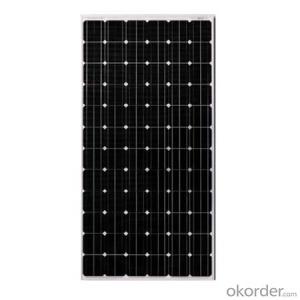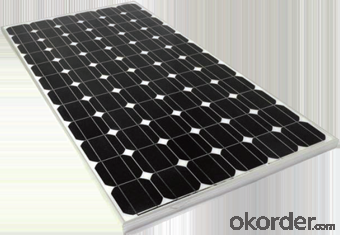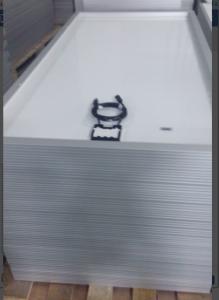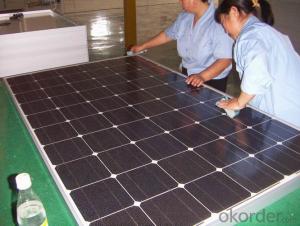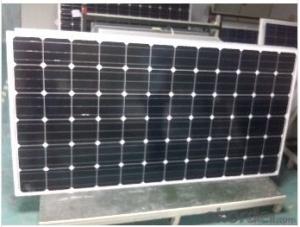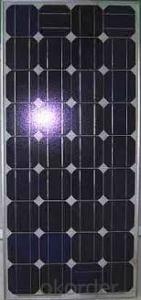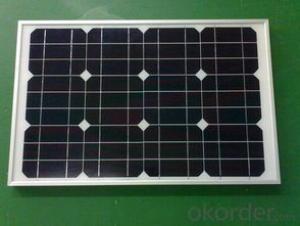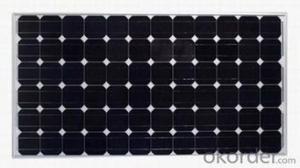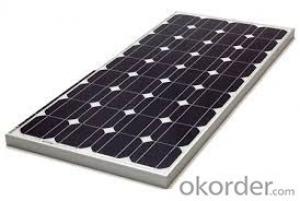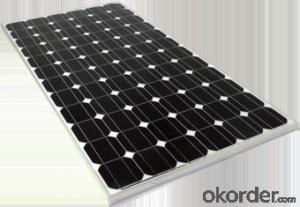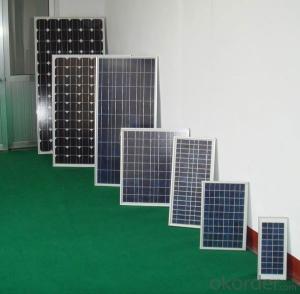Electric Car Charging Solar Panels - Hot Sale 10W to 185W Monocrystalline Solar Panel Factory Direct Sale CNBM
- Loading Port:
- Qingdao
- Payment Terms:
- TT OR LC
- Min Order Qty:
- 10 set
- Supply Capability:
- 300000 set/month
OKorder Service Pledge
OKorder Financial Service
You Might Also Like
Monocrystalline Solar Panel with 160W
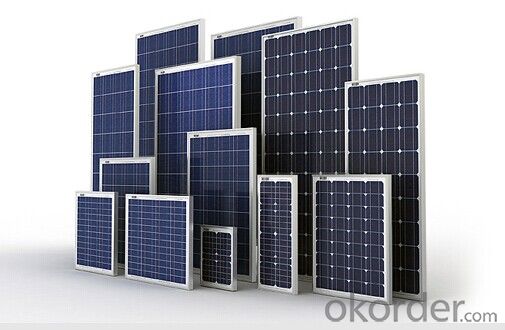
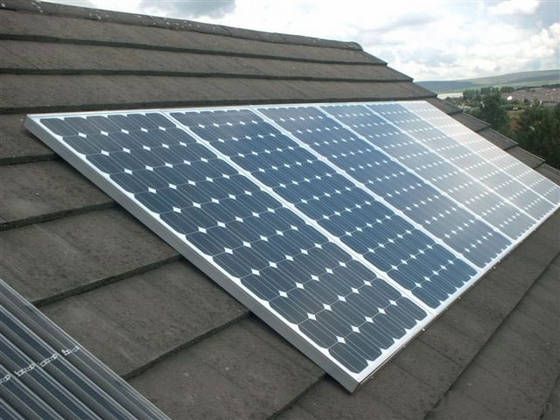
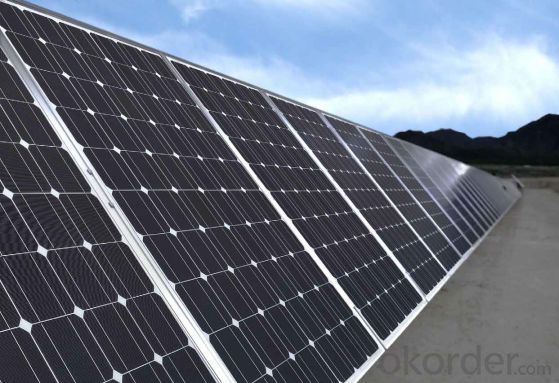
Monocrystalline Solar Modules
We offers a range of small, medium and large monocrystalline solar modules, designed for a range of requirements.
Specifications:
Tolerance | +/- 3% |
Cell | Monocrystalline silicon solar cells |
N0. of Cells | 72 (12 x 6) |
Dimension of Modules (mm) | 1581 x 809 x 40 |
Weight (kg) | 15.5 |
Limits:
Operating Temperature | -40~+85? |
Storage Temperature | -40~+85? |
Maximum System Voltage | 1000 VDC max. |
Hail Impact | Diameter of 28mm with impact speed of 86km/h |
Temperature and Coefficients:
NOCT | 48C+/-2? |
Voltage temperature coefficient (%/K) | -0.34 |
Current temperature coefficient (%/K) | 0.09 |
Power temperature coefficient (%/K) | -0.37 |
Characteristics:
Model: | SGM-160D | SGM-165D | SGM-170D |
Max-power voltage Vmp (V) | 34.5 | 35.4 | 35.8 |
Max-power current Imp (A) | 4.64 | 4.66 | 4.75 |
Open-circuit voltage Voc (V) | 41.75 | 43.6 | 43.32 |
Short-Circuit Current Isc (A) | 5.32 | 5.08 | 5.38 |
Max-power Pm(W) | 160 | 165 | 170 |
Model: | SGM-175D | SGM-180D | SGM-185D |
Max-power voltage Vmp (V) | 36.1 | 36.2 | 36.2 |
Max-power current Imp (A) | 4.85 | 4.97 | 5.11 |
Open-circuit voltage Voc (V) | 43.68 | 43.8 | 44.8 |
Short-Circuit Current Isc (A) | 5.49 | 5.48 | 5.51 |
Max-power Pm(W) | 175 | 180 | 185 |
STC: Irradiance 1000W/m2, Module temperature 25?, AM=1.5
Monocrystalline Solar Panels Specifications Range
Maximum Power (Pm) | Dimension | Weight | Operating Voltage (Vmp) | Operating Current (Imp) | Open Circuit Voltage (Voc) | Short Circuit Current (Isc) |
3W | 158x241x25mm | 0.5kg | 8.5V | 0.36A | 10.5V | 0.4A |
4W | 308x166x25mm | 0.77kg | 8.5V | 0.47A | 10.5V | 0.54A |
4W | 308.x166x25mm | 0.77kg | 16.8V | 0.24A | 21V | 0.27A |
5W | 296x215x25mm | 0.3kg | 16.8V | 0.48a | 21V | 0.54A |
10W | 286x406x25mm | 1.5kg | 16.8V | 0.59A | 21V | 0.66A |
12W | 286x406x25mm | 1.5kg | 16.8V | 0.71A | 21V | 0.8A |
14W | 286x541x25mm | 2kg | 16.8V | 0.83A | 21V | 0.96A |
16W | 286x541x25mm | 2kg | 17.2V | 0.93A | 21.5V | 0.99A |
18W | 296x541x25mm | 2.4kg | 18.8V | 1.07A | 21V | 1.2A |
20W | 296x641x25mm | 2.4kg | 17.2V | 1.15A | 21.5V | 1.24A |
24W | 541x451x25mm | 3.15kg | 16.8V | 1.14A | 21V | 1.56A |
26W | 541x451x25mm | 3.15kg | 17.2V | 1.51A | 21.5V | 1.63A |
30W | 296x966x25mm | 3.85kg | 16.8V | 1.78A | 21V | 2.03A |
36W | 541x641x35mm | 4.7kg | 16.8V | 2.14a | 21V | 2.4A |
40W | 541x641x35mm | 4.7kg | 17.2V | 2.33A | 21.5V | 2.5A |
55W | 1057x457x35mm | 6.6kg | 17.6V | 3.12A | 21.6V | 3.3A |
70W | 546x1196x35mm | 8.5kg | 16.8V | 4.15A | 21V | 4.7A |
75W | 546x1196x35mm | 8.5kg | 17.2V | 4.36A | 21.5V | 4.8A |
80W | 546x1196x35mm | 8.5kg | 17.6V | 4.55A | 21.6V | 4.9A |
110W | 1066x811x40mm | 11.8kg | 17.6V | 6.25A | 21.6V | 6.6A |
150W | 1066x811x40mm | 14kg | 34.4V | 4.36A | 43.2V | 4.7A |
- Q: Can solar panels be used for charging electric bicycles?
- Yes, solar panels can be used to charge electric bicycles. Solar panels convert sunlight into electricity, which can then be used to charge the batteries of electric bicycles. This eco-friendly and sustainable method of charging allows for convenient and cost-effective transportation.
- Q: Can solar panels be installed on walls?
- Yes, solar panels can be installed on walls. Wall-mounted solar panels are known as solar wall systems, and they are a viable option for generating electricity from the sun. These panels are typically installed vertically on the sides of buildings or other structures, allowing for efficient use of space.
- Q: How do solar panels affect the grid during times of high electricity demand?
- Solar panels can help alleviate the strain on the grid during times of high electricity demand by generating clean and renewable energy. By producing electricity directly from sunlight, solar panels can contribute to the overall power supply and decrease the reliance on traditional fossil fuel sources. This reduces the burden on the grid, mitigates the risk of blackouts, and helps meet the increased energy demand more sustainably.
- Q: Can solar panels be installed on churches or religious buildings?
- Yes, solar panels can be installed on churches or religious buildings. In fact, many religious institutions have embraced solar energy as a sustainable and cost-effective solution to reduce their carbon footprint and lower energy bills. Installing solar panels on churches not only aligns with their commitment to environmental stewardship but also allows them to set an example for their community by promoting clean energy and sustainability.
- Q: Any feedback on solar panels?
- Solar panels are very good. Although they may start off expensive, they will soon make up for the money spent. But they will only be useful when facing south and in sunny-ish countries. :)
- Q: Can solar panels be installed on bus stops or shelters?
- Yes, solar panels can be installed on bus stops or shelters. This allows them to generate electricity from sunlight, which can be used to power lighting, signage, and other amenities at the bus stops or shelters. It also helps in reducing reliance on grid electricity and promotes the use of renewable energy sources.
- Q: How do solar panels affect the homeowner's insurance policy?
- Solar panels can potentially affect a homeowner's insurance policy as they are considered an added feature or improvement to the property. The presence of solar panels may result in an increase in the insured value of the home, leading to higher insurance premiums. However, some insurance companies offer specialized coverage for solar panels, which may provide additional protection against damage or theft. It is advisable for homeowners to contact their insurance provider to discuss any necessary adjustments or coverage options related to their solar panel installation.
- Q: Can solar panels be used for powering security systems?
- Yes, solar panels can be used to power security systems. Solar panels convert sunlight into electricity, which can be used to power various devices, including security cameras, alarms, and sensors. This allows security systems to operate independently of the electrical grid, making them more reliable and cost-effective in remote locations or areas prone to power outages. Moreover, solar-powered security systems are also environmentally friendly, reducing reliance on fossil fuels and minimizing carbon emissions.
- Q: I have a solar panel that puts out 00v, .5 amps in full sun. Before I thought it would charge a 2v battery without a solar charger but then I talked to someone and they said that it was wasting a lot of power and could potentially hurt the battery. A second part to this question is what happens if I put it on a 72v battery without a controller. Thanks!
- Guide okorder /
- Q: Just curious.
- Create okorder /
Send your message to us
Electric Car Charging Solar Panels - Hot Sale 10W to 185W Monocrystalline Solar Panel Factory Direct Sale CNBM
- Loading Port:
- Qingdao
- Payment Terms:
- TT OR LC
- Min Order Qty:
- 10 set
- Supply Capability:
- 300000 set/month
OKorder Service Pledge
OKorder Financial Service
Similar products
Hot products
Hot Searches
Related keywords
